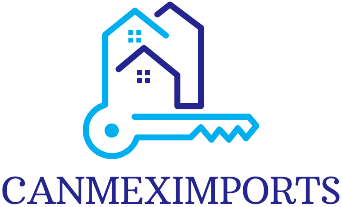Table of Contents
ToggleWhen it comes to mortgages, choosing between fixed and adjustable rates can feel like picking a favorite child—both have their merits, but one might just steal your heart. Fixed-rate mortgages offer the comforting embrace of stability, locking in that sweet interest rate for the long haul. It’s like having a reliable friend who always shows up on time, no matter what life throws your way.
On the flip side, adjustable-rate mortgages are the thrill-seekers of the financial world. They start off with tempting low rates that can make anyone’s wallet dance with joy. However, these rates can change like a chameleon at a party, leaving borrowers wondering if they’ll be celebrating or crying when the next adjustment rolls around. Understanding the pros and cons of each can help anyone make the best choice for their financial future.
Overview of Fixed vs Adjustable Rates
Fixed-rate mortgages provide borrowers with the certainty of a stable interest rate throughout the loan term. This consistency in payments simplifies budgeting and planning for the future. In contrast, adjustable-rate mortgages offer lower initial rates that can change according to market conditions. These adjustments can lead to fluctuating monthly payments, creating potential uncertainty over time.
Borrowers often choose fixed-rate loans for long-term stability. The predictability of fixed payments eliminates the risk associated with interest rate increases. An adjustable-rate mortgage may seem attractive due to its lower starting rates, but it carries the risk of increased payments after the initial period.
The initial period of an adjustable-rate mortgage usually lasts between 5 to 7 years, during which the interest rate remains constant. After this period, rates can adjust annually, based on a specified index. This potential for increased payments can be a significant concern for those on tight budgets.
Many factors influence the choice between these two options, including current interest rates, future market predictions, and personal financial situations. Fixed-rate mortgages suit those who prefer long-term financial predictability, while adjustable-rate mortgages appeal to those willing to accept some risk for potential lower costs in the short term.
Understanding the implications of each type allows borrowers to make informed decisions aligned with their financial goals. It’s essential to consider how each option impacts overall long-term financial health.
Advantages of Fixed Rates

Fixed-rate mortgages offer several key benefits that attract borrowers seeking stability.
Stability of Payments
Monthly payments remain constant throughout the life of the loan. Borrowers can budget effectively without worrying about variations in interest rates. This predictability lowers the risk of unexpected financial strain due to increased payments. Lenders typically provide fixed interest rates for extended periods, often spanning 15 to 30 years. Maintaining the same payment amount simplifies financial planning, allowing borrowers to allocate funds toward other expenses or savings.
Long-Term Planning
Fixed rates enhance long-term financial planning with predictable expenses. Individuals can plan for significant life events, like retirement or education, without fear of fluctuating mortgage costs. Since interest rates remain consistent, borrowers can estimate total loan costs over its duration accurately. This long-term view contributes to better financial decision-making, as it provides a clearer picture of future obligations. As a result, opting for a fixed-rate mortgage aligns well with those looking to establish stable financial foundations.
Advantages of Adjustable Rates
Adjustable-rate mortgages offer distinct benefits that appeal to various borrowers, particularly those seeking lower initial payments. These advantages are worth considering when evaluating mortgage options.
Potential for Lower Initial Rates
Adjustable-rate mortgages often come with lower initial rates compared to fixed-rate loans. Such rates can make a significant difference in monthly payments during the initial period. For instance, borrowers may enjoy rates that are about 0.5% to 1% lower than typical fixed rates, which translates to savings that can help with budgeting or other financial goals. This affordability encourages many homeowners to enter the market sooner, as lower upfront costs allow for easier entry into homeownership.
Rate Adjustment Mechanism
The rate adjustment mechanism plays a crucial role in the functioning of adjustable-rate mortgages. After the initial fixed period, typically lasting 5 to 7 years, rates adjust annually based on a specified index plus a margin. Variations in interest rates will impact monthly payments, which can increase or remain stable depending on market conditions. Specific guidelines dictate when adjustments occur, providing borrowers with a clear schedule for potential changes. Proactive borrowers can take advantage of this flexibility, as lower rates during favorable market conditions may lead to cost-saving opportunities over time.
Factors to Consider When Choosing
Understanding key factors plays a crucial role in deciding between fixed and adjustable rates. Borrowers analyze their financial situation and current market conditions to make informed choices.
Personal Financial Situation
Personal financial circumstances significantly influence mortgage choice. Borrowers with stable incomes and long-term plans typically favor fixed-rate mortgages for consistent payments. Predictability in payments aids in budgeting and financial planning. Individuals expecting changes in their financial landscape, such as job relocations or family growth, may consider adjustable-rate mortgages for potentially lower initial costs. Assessing debt-to-income ratios is essential as well; higher ratios can limit options. Timing and life goals should also factor into decisions, as they correlate with long-term stability or short-term flexibility.
Market Conditions
Current market conditions impact the decision between fixed and adjustable rates. Interest rates fluctuate based on economic indicators, influencing borrowing costs. When rates are low, locking in a fixed rate provides security against future increases. Conversely, in a rising-rate environment, adjustable-rate mortgages may initially seem appealing due to their lower early payments. Understanding economic forecasts, including inflation and federal reserve policies, helps borrowers predict future trends. Historical data on rate adjustments also provides valuable insights. Evaluating local housing markets may reveal additional factors that affect choice as well.
Choosing between fixed and adjustable-rate mortgages requires careful consideration of personal financial situations and market conditions. Fixed-rate mortgages offer the comfort of predictable payments and long-term stability, making them ideal for those who value security in their financial planning. On the other hand, adjustable-rate mortgages can provide lower initial payments, appealing to borrowers who anticipate changes in their financial landscape.
Ultimately, understanding the advantages and disadvantages of each option empowers borrowers to make informed decisions that align with their long-term financial goals. By weighing current interest rates and personal circumstances, individuals can select the mortgage type that best fits their needs.





